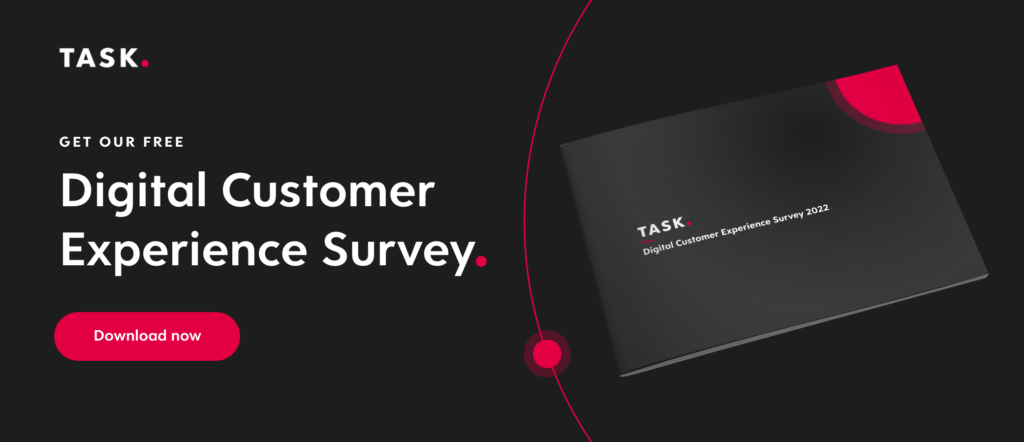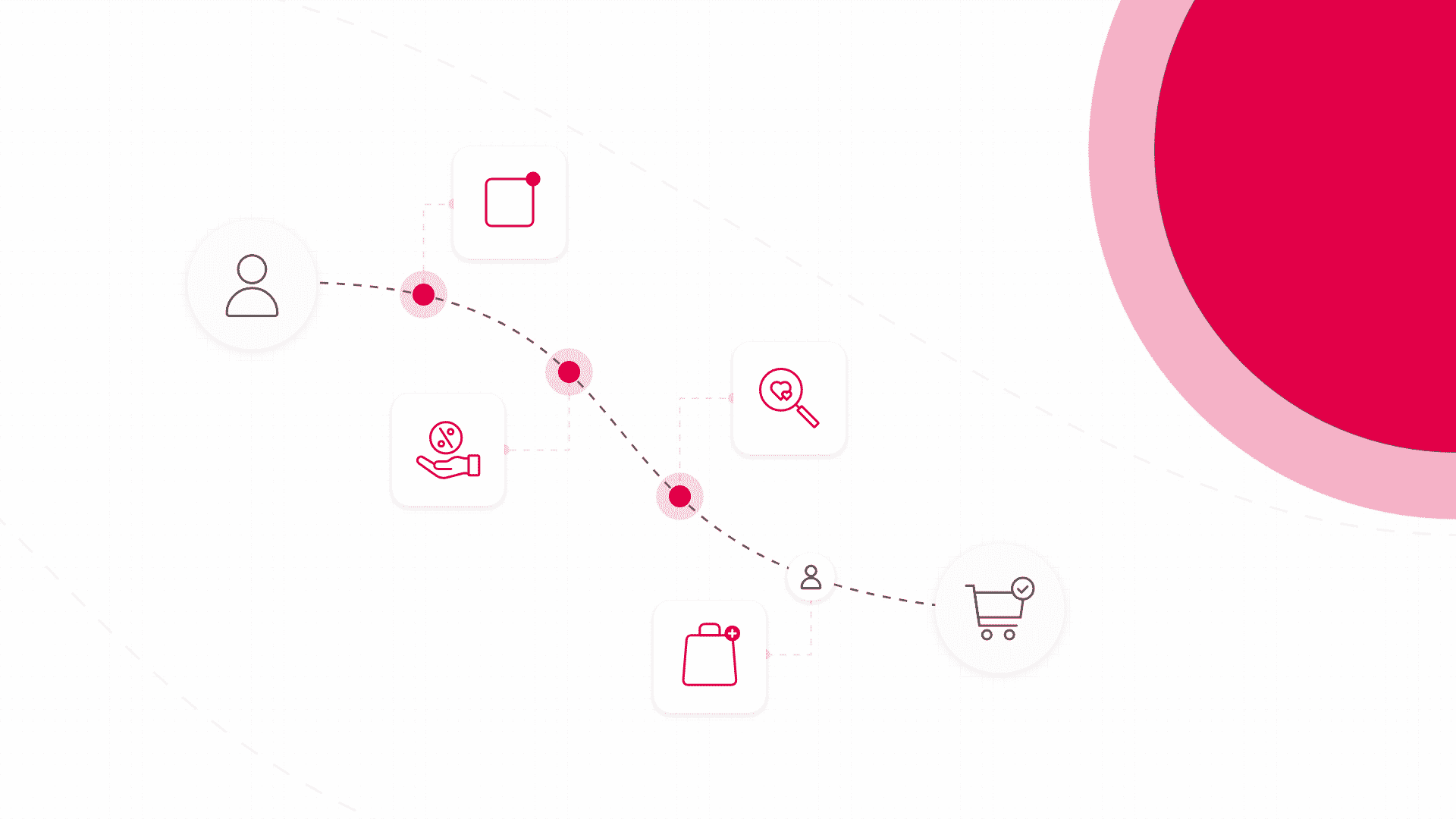In today’s omnichannel marketplace, customers have a lot of choice about what they buy, and how to buy it.
Customer journey analytics helps brands tap into that digital omnichannel experience, and provide valuable insight into what drives customer behavior, and what motivates brand loyalty over time.
Customer journey analytics – a primer
In today’s age of automation, customers interact with hospitality brands through a wide combination of channels – from mobile ordering apps to drive-thru windows to self-ordering kiosks. Customer journey analytics is the process of merging the data collected across all of these touchpoints to track, understand, and improve the customer experience at every point of service.
By leveraging your customer data, your brand will be able to make more informed decisions based on who your customers are, what their interests and needs are, and their purchasing preferences. Customer journey analytics helps you tap into those answers and build a better customer experience at every point of service.
How is it different from customer journey mapping?
Think of customer mapping as a blueprint for what you predict customers will do when they interact with your brand. Journey analytics, however, uncover the real-time data and outcomes after each interaction.
| Customer Mapping | Journey Analytics |
|---|---|
| Developed before an interaction | Developed after an interaction |
| Based on ideal projections | Based on real data |
| Cannot uncover customer pain points | Identifies areas of weakness that need improvement |
The bottom line is that customer journey analytics give brands the deepest level of insight into how and why their customers make certain kinds of decisions. Leveraging that insight can be the difference that pushes your customer offering past your competition.
Why is customer journey analytics essential for QSRs?
“Customer analytics tell us a story through data — from a customer’s very first interaction with your brand, through to an entire customer lifetime value. The best way to understand a customer’s true thoughts is in their purchasing decisions – what they buy, when they buy it, and whether they buy it again in the future,” says TASK President of North America, John Laporte.
By collecting these insights, QSRs can create better a better customer experience – which in turn will lead to higher sales, increased engagement, and more revenue.
How Customer Behavior Models Can Help Your Business
You can create better prediction and personalization using artificial intelligence or machine learning in addition to traditional customer behavior models.
Monitoring customer behavior across multiple channels
The key to an effective customer analytics program is being able to integrate all the data from your range of customer-facing channels into a singular platform. Using a high-level POS system enables QSR managers to see orders, payments, refund requests, and the rate of abandoned carts across all digital touchpoints in real-time.
Having the right tools is the first step, but knowing how to use them to their potential is crucial if you want to see real change in your metrics. These are the key aspects of monitoring customer data.
Identifying the high-performing channels
Customer journey analytics enables you to understand the entire customer journey, and why your guests make the decisions they do. In fact, this insight can help brands increase digital activity by over 25%.
Gathering conversion rates, for example, can demonstrate what marketing tactics are working, or which items seem to attract which customers. You’re also able to easily track what channel is most effective at any given time – whether that’s your mobile app, your presence on third-party delivery apps, or in-store locations.
Unifying customer data
A singular, centralized digital system automates the process of matching and merging data from different platforms. This ultimately saves time and ensures complete, accurate database management.
The age of multi-channel purchasing means that each of your points of service – whether your website, storefront, or delivery app – must offer consistent brand experiences. Understanding your data is about more than seeing overall sales rates. You should also consider the timing and context that drives customer behavior.
By collating your data into one place, you will not only be able to see the big-picture of what, when, and how your customer make purchasing decisions, but also how they behave differently depending on the situation.
Understanding customer touchpoints
Customer journey analytics help managers identify key behaviors and ordering preferences that emerge over time across different channels.
Let’s say your data shows far more customers purchase add-ons and sides when they place an order from your mobile app, compared to any other touchpoint. This may signal that your last-minute “Would you like that with fries?” window is working well, and could be implemented more effectively across other ordering channels.
Optimizing in-house operations
The benefits of investing in your customer journey extend beyond marketing strategies. They can also help streamline your operations behind the scenes. Data can identify where front-of-house staff often make mistakes, making it easy and straightforward to implement change where it’s needed.
What are the key benefits for QSRs?
Customer journey analytics give businesses an accurate, genuine understanding of what their customers are experiencing, and what is most likely to motivate a repeat purchase.
Leveraging customer journey analytics allows QSRs to pinpoint customers’ most impressionable moments in their journey – and develop personalized messages at those crucial times to keep them engaged.
Here are the top ways in which investing in customer journey analytics tools can help boost your business and drive forward better guest experiences.
Make data-driven decisions
Your customer journey analytics allows you to visually compare your predicted customer map against real performance metrics. Making data-driven decisions is about using your knowledge of past behavior to make more effective changes in the future.
With accurate customer journey analytics, it is possible to identify customer retention rates in relation to your marketing efforts. This will help you strategically analyze your own tactics and more effectively align your marketing with your audience.
Develop a competitive edge
Staying ahead in today’s market requires QSRs to drive forward a customer-centric approach. Better insight means you can solve problems quicker, and keep customers coming back for more.
“The basis of great customer service is being able to ID quickly and accurately,” explains John Laporte, TASK’s President of North America. “Know who is walking through your door, and then learn what to offer them.”
If you offer the best experience possible, your customers will return, and they’ll tell their friends. Focusing on the customer experience is the best way to keep your audience engaged.
Retain more customers
Understanding your customer journey also allows brands to build data-driven, effective targeted marketing campaigns – which has been proven to significantly increase customer satisfaction.
Customer journey analytics help uncover behavioral trends at scale, which can lead to a 25 percent increase in digital engagement. By boosting your communication with customers, and delivering better experiences, you’ll see better loyalty and overall higher rates of repeat visits and purchases.
Ensure a better ROI
While quantifying ROI is still considered the hardest challenge when it comes to experience management, customer journey analytics software is an essential starting point if you want to improve your business outcomes. Accurate data tools give businesses better opportunities to tailor marketing efforts in real-time.
Investing in a full digital stack to support top-of-the-line data software, your brand will be able to:
- Effectively track and monitor customer activity
- Compare purchasing behavior to business efforts
- Make quicker, more accurate decisions – from service offers to marketing
- Implement changes more effectively, with less trial-and-error
Overall, these benefits will help boost business from multiple angles simultaneously. The real ROI is understanding your customers better, such that you can align your brand with their distinct needs and tendencies – leading to more sales, and higher lifetime value.
Improve employee engagement
Customer journey analytics seamlessly incorporate back-end staff management, including centralized access to historical data around collaboration and productivity.
These metrics include everything that has to do with workflow and employment – from what hour of the day experiences the most mistakes, to what time of year will have the highest turnover. With in-depth knowledge of these trends, managers can make effective changes to working environments to make the experience more enjoyable and productive for employees.
Enhance your customer experience
Today’s data-driven world encourages smarter, context-aware interactions between customers and brands.
As John says, “Driving omnichannel consistency and personalization are crucial for hospitality brands – and it’s only possible to effectively keep up if you have the tech to support seamless platform integration.”
Considering your omnichannel experience is crucial to maintain engaging and relevant messaging and offerings to your customers. A centralized transaction management platform makes it easy to collate data across every touchpoint for an integrated, consistent approach.
Make Data-Driven Decisions with a Transaction Management Platform
A digital transaction management platform streamlines business operations for hospitality businesses, saving money and time.
How to get actionable insights from customer journey analytics
Top-performing brands around the world consistently rank customer journey analytics as their highest or second-highest CX-related investment priority. Here’s how you can start getting more from your digital tools, and drive forward meaningful improvement in your QSR business:
- Collect and integrate data – This includes transactional data, offline purchase logs, mobile app ordering data, social media engagement, and customer service intelligence.
- Visualize and analyze the data – Use customer journey analytics software to connect and centralize all databases.
- Create a customer journey map – Outline the predicted steps your customers will take when interacting with your business.
- Conceptualize different buyer personas – Divide your customer base into groups based on: demographics, purchase patterns, or levels of loyalty.
- Outline the KPIs – Consider metrics such as conversion rate, frequency of purchase, speed of service, customer churn, and employee attrition.
- Create a roadmap for testing and optimization – Identify the service pain points across all digital channels based on the information you’ve gathered and assessed.
- Identify opportunities for improvement – Create data-driven solutions to eliminate gaps in customer journeys. After you’ve implemented changes, review the result by gathering updated KPIs.
- Invest in the right tools – Be sure to use top-of-the-line technology to support your operations and customer interactions at the highest level.

